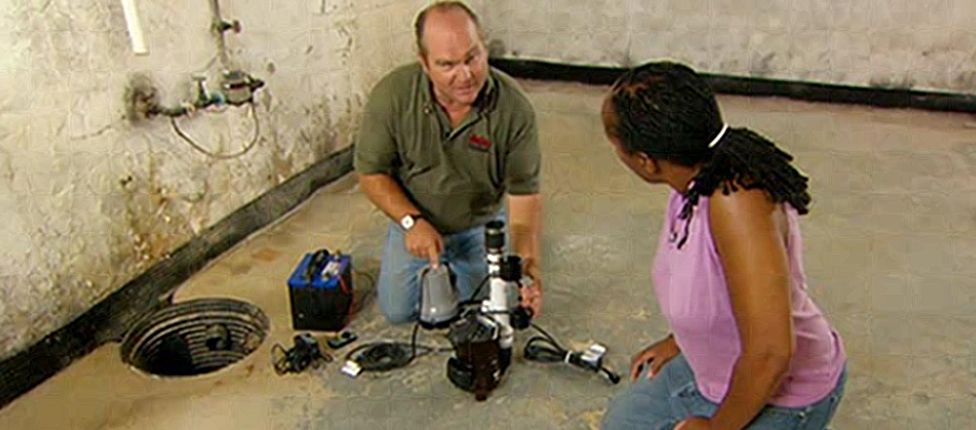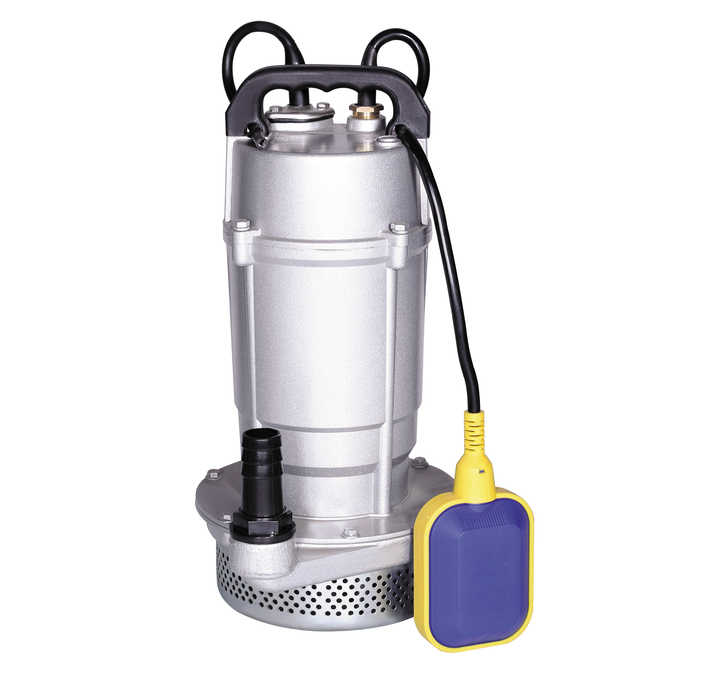Your Definitive Guide to Taking Care of a Sump Pump
Your Definitive Guide to Taking Care of a Sump Pump
Blog Article
We have noticed this great article pertaining to Keep Your Sump Pump Clean, It'll Keep You Dry listed below on the net and felt it made sense to discuss it with you here.

Sump pumps are essential components in lots of homes, particularly in locations vulnerable to flooding or extreme moisture. They help prevent water damages by efficiently getting rid of excess water from basements or crawl spaces. However, like any other device, sump pumps need normal maintenance to guarantee they function properly when needed one of the most. Cleansing your sump pump is a vital part of its upkeep, and understanding exactly how to do it correctly can conserve you from expensive repairs and potential disasters.
Introduction
Keeping a clean sump pump is important for its correct performance and durability. Ignoring this vital task can lead to clogs, malfunctions, and inevitably, water damage to your residential or commercial property. Therefore, discovering how to clean a sump pump is essential for homeowners who count on these tools to maintain their cellars dry and safeguarded.
Indications of a Dirty Sump Pump
Recognizing when your sump pump needs cleansing is critical for stopping prospective malfunctions. Some common indicators that indicate a dirty sump pump include weird noises throughout operation, lowered water flow, and noticeable particles in the pit. If you discover any one of these signs and symptoms, it's vital to clean your sump pump immediately to stay clear of any kind of additional problems.
Planning for Cleansing
Before you start cleansing your sump pump, it's important to take some safety and security preventative measures. Start by shutting off the power to the pump to avoid any type of electrical crashes. In addition, wear proper safety gear, such as handwear covers and goggles, to shield on your own from dust, particles, and possible virus.
Understanding the Sump Pump
Before diving into the cleansing process, it's essential to have a fundamental understanding of how a sump pump functions. Commonly set up in a pit or basin below the basement floor, a sump pump includes several crucial elements, including a pump, a float button, and a discharge pipeline. When water gathers in the pit, the float button activates the pump, which then pumps the water out through the discharge pipeline, away from the structure's foundation.
Detailed Guide to Cleansing a Sump Pump
Shutting down the Power
Begin by disconnecting the power supply to the sump pump to avoid any type of accidents while cleaning.
Checking for Proper Performance
Prior to re-installing the pump, do a quick test to ensure that the float button turns on the pump correctly. Pour some water right into the sump pit and observe the pump's procedure. If every little thing is working correctly, you can reconstruct the pump and reconnect the power supply.
Getting Rid Of Debris and Dirt
Use a container or an inside story to eliminate any type of visible particles, dust, or sediment from the sump pit. Dispose of the debris correctly to prevent it from obstructing the pump or the discharge pipe.
Cleaning the Pump and Drift Change
Once the pit is clear of debris, thoroughly eliminate the pump from the pit. Examine the pump and the float button for any type of indicators of damages or wear. Use a soft brush or fabric to cleanse the surfaces and remove any kind of built up grime.
Purging the System
After cleansing the pump and float switch, purge the sump pit with tidy water to remove any kind of remaining dust or debris. This will certainly aid guarantee that the pump operates smoothly and efficiently.
Maintenance Tips to Maintain Your Sump Pump Clean
Along with routine cleaning, there are several maintenance tips you can follow to keep your sump pump in optimal condition:
Final thought
Cleaning your sump pump is a crucial aspect of its upkeep and ensures that it runs effectively when you require it one of the most. By complying with the steps outlined in this overview and integrating regular maintenance right into your routine, you can expand the life expectancy of your sump pump and safeguard your home from water damages.
6 STEPS ON HOW TO CLEAN A SUMP PUMP PROPERLY
UNDERSTANDING SUMP PUMPS
Your sump pump plays a crucial role in protecting your home by managing and removing excess water. It primarily functions as a “shield”, guarding your basement against the damaging effects of water accumulation. The pump is housed in a sump pit in the lowest part of your basement, and its job is to pump out any water that collects there.
During heavy rainfalls or when snow melts rapidly, water can infiltrate your basement, posing potential risks like flooding, structural damage, and harmful mold growth. Here, the sump pump springs into action, pumping out the intruding water and directing it away from your home.
SAFETY FIRST
Before cleaning, remember to prioritize safety. Disconnect the sump pump from the power source to prevent any accidental electric shocks. Also, wear sturdy gloves to protect your hands from any sharp or dirty components within the pump.
REMOVE THE SUMP PUMP
After ensuring your safety, the next step is to remove the sump pump from its pit. Doing this might require careful maneuvering as you don’t want to damage any pump components. Once removed, clean the sump pit to remove any accumulated debris or sludge.
INSPECT THE PUMP
Inspect the pump for any visible signs of wear or damage. Check the power cord, float switch, and impeller housing. If any components look worn out or damaged, consider replacing them to ensure optimal performance.
CLEAN THE PUMP
Thoroughly clean the pump with warm, soapy water. Make sure to rid it of any dirt, gravel, or other debris that might impede its performance. You can use a toothbrush to clean the small, hard-to-reach parts of the pump.
REINSTALL THE SUMP PUMP
Reinstall the pump into the sump pit Make sure it’s positioned correctly to remove the water effectively Once it’s back in place, reconnect it to the power source TEST THE PUMP
Finally, pour some water into the pit to ensure the pump works correctly. It should start automatically and begin pumping out the water; if it doesn’t, check the power source and the positioning of the pump.
Remember, while cleaning your sump pump is an essential part of home maintenance, hiring a professional plumber for a thorough inspection and cleaning at least once a year is also important. This will ensure that your pump is in optimal condition, ready to protect your home from potential water damage.
BEST PRACTICES FOR CLEANING SUMP PUMP DISCHARGE PIPES
Regular Inspection: Regularly inspect your discharge pipes, especially during heavy rainfall or snowmelt periods. Look for any signs of blockage or damage. Early detection of problems can prevent serious issues down the line. Periodic Cleaning: Over time, sediment and debris can accumulate in the discharge pipes, impeding the flow of water. Regular cleaning helps keep the pipes clear and functioning efficiently. You can use a high-pressure water jet to effectively clean the pipes. Insulation During Winter: In colder climates, discharge pipes can freeze, blocking the outflow of water. Protect your discharge pipes from freezing temperatures by insulating them with foam pipe insulation. This will ensure the sump pump can continue to discharge water even in freezing conditions. Proper Positioning: The discharge pipe should be positioned to direct water away from your home’s foundation. Improper positioning can lead to water seeping back into the basement. Ensure the pipe is long enough and angled correctly. Installation of a Check Valve: A check valve prevents water from flowing back into your sump pit after the pump has pushed it out. Installing a check valve helps maintain the efficiency of your sump pump and reduces the risk of flooding. Minimize Pipe Turns: Every curve or turn in the discharge pipe can decrease the efficiency of water flow. By minimizing turns and bends in your discharge pipe, you can increase the efficiency of your sump pump. https://www.fullspeedplumbing.com/how-to-clean-a-sump-pump-properly9999/

I found that blog posting on Steps to Cleaning Your Sump Pump Properly when doing a search on the internet. Enjoyed reading our blog? Please share it. Let another person check it out. I recognize the value of your readership.
Detail Report this page